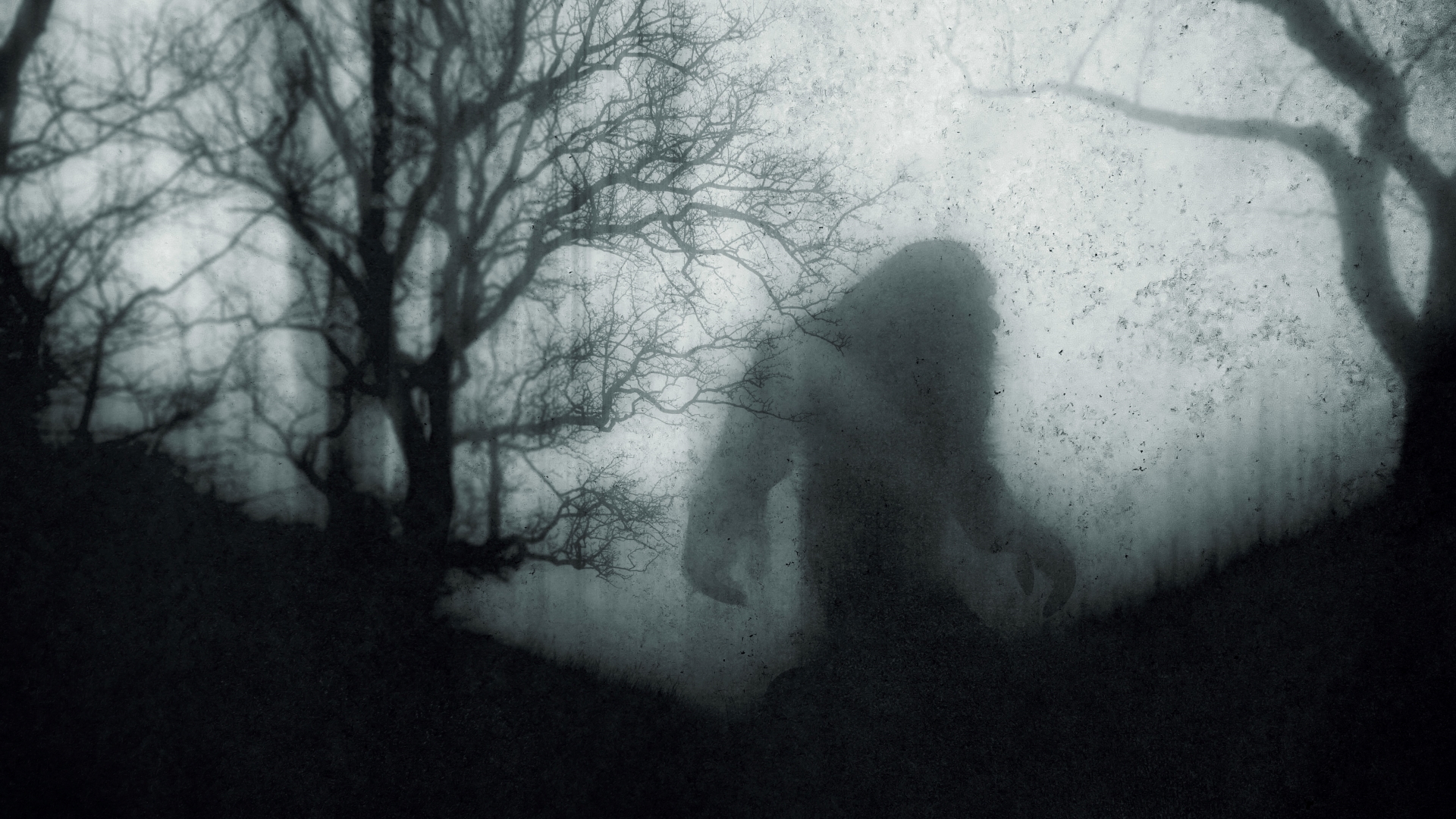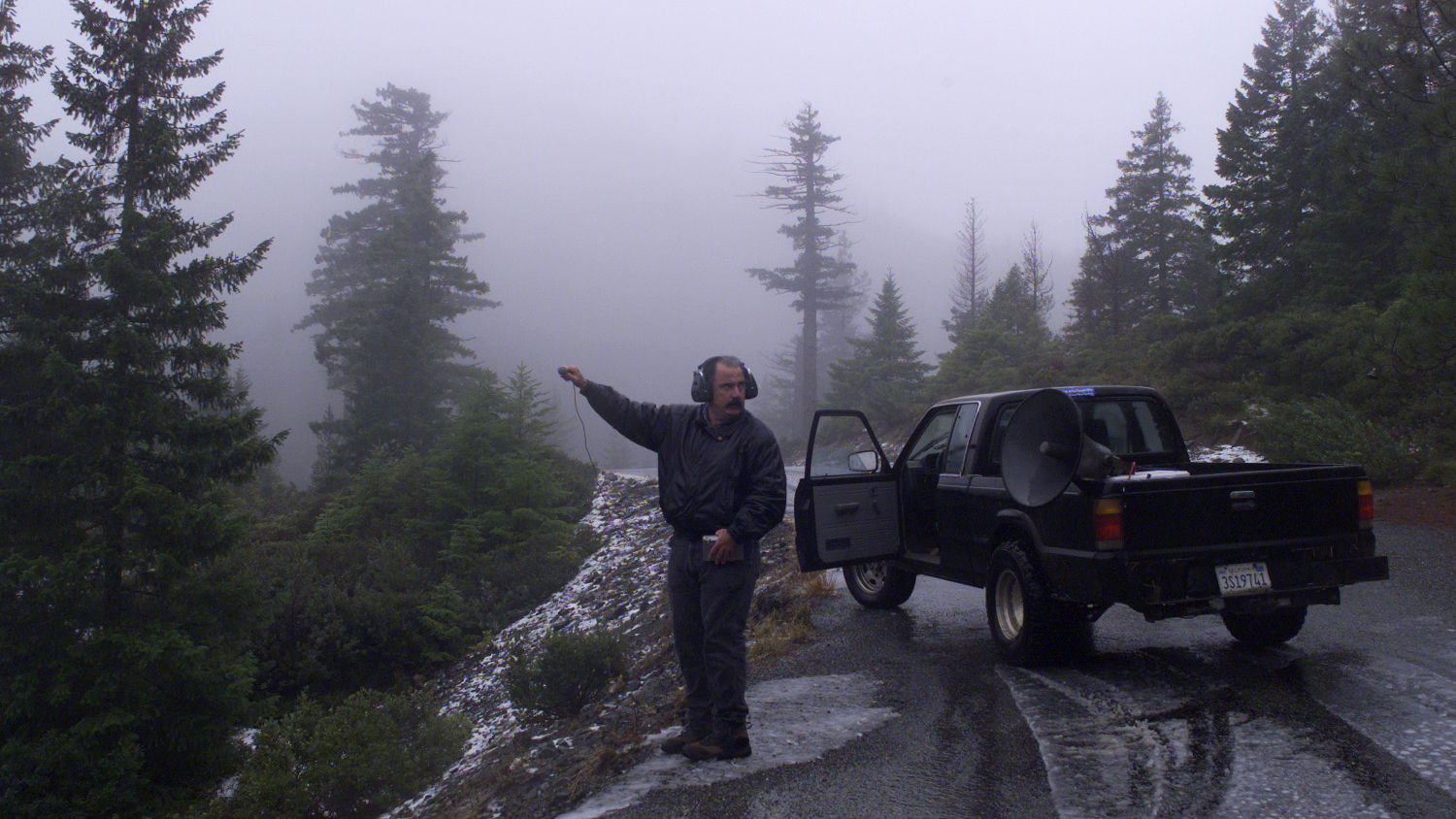Is Bigfoot real? Everything you need to know about the Sasquatch
Bigfoot, or Sasquatch, is a large ape-like creature some people believe inhabits North America but there's no hard evidence it actually exists.

Bigfoot, or Sasquatch, is a giant ape-like creature that some people believe roams North America. It is a cryptid (or species rumored to exist) and just like the Chupacabra or Loch Ness monster, there's scant physical evidence to suggest Bigfoot is actually out there. But that doesn't stop alleged sightings of the ape that never shows its face or Bigfoot buffs from trying to prove there's life in the legend, even if for the most part they are probably just black bears.
Most Bigfoot sightings occur in the Northwest, where the creature can be linked to Indigenous myths and legends. The word Sasquatch is derived from Sasq’ets, a word from the Halq’emeylem language used by some Salish First Nations peoples in southwestern British Columbia, according to the Oregon Encyclopedia. It means "wild man" or "hairy man."
What started the Bigfoot phenomenon?

As early as 1884, the British Colonist newspaper in Victoria, Canada published an account of a “gorilla type” creature captured in the area. Other accounts, largely decried as hoaxes, followed, according to the Canadian Encyclopedia. Sasquatch book author John Green compiled a list of 1,340 sightings through the 19th and 20th centuries. But the modern Bigfoot or Sasquatch myth gained new life in the late 1950s.
In 1958, the Humboldt Times, a local newspaper in Northern California, published a story about the discovery of giant, mysterious footprints near Bluff Creek, California. In the story, they referred to the creature that made them as “Bigfoot”, according to Smithsonian Magazine. Bigfoot curiosity grew rapidly during the second half of the 20th century, after an article in True magazine, published in December 1959, described the 1958 discovery.
The footprints near Bluff Creek were a prank by a man called Ray Wallace, his children revealed after his death in 2002, according to Smithsonian Magazine. By that time, though, Bigfoot was firmly established in popular culture across the continent. Since the 1958 article was published, a wealth of other claims have been made about Sasquatch tracks, casts, photos, videos, and other "evidence."
Related: Infographic: Tracking belief in Bigfoot
Bigfoot sightings

There have been more than 10,000 eyewitness accounts of Bigfoot in the continental U.S. in the last 50 years, Live Science reported in 2019. In these accounts, Bigfoot is usually described as being about 8 to 10 feet (2.4 to 3 meters) tall and covered in hair.
Eyewitness reports, or sightings, are the most common evidence put forward for the existence of Bigfoot. Unfortunately, these are based on human memories, and memories are not reliable, Live Science previously reported. In crime cases, for example, witnesses can be influenced by their emotions and may miss or distort important details. In the same vein, people also often overestimate their ability to remember things. When it comes to cryptids like Bigfoot, the human brain is capable of making up explanations for events it can't immediately interpret, and many people simply want to believe they exist, Live Science previously reported.
Related: Real or not? The science behind 12 unusual sightings
Bigfoot video and photographs
The most famous Bigfoot video is a short film taken in 1967 by Roger Patterson and Bob Gimlin, known as the "Patterson–Gimlin film," or "Patterson film." Shot in Bluff Creek, the video shows what appears to be a large and hairy bipedal ape, or Bigfoot, striding through a clearing. The video's authenticity is still debated but it was likely a hoax, with the ape-like figure just a human wearing a costume.
Brian Regal, an associate professor of the history of science at Kean University in New Jersey and author of "Searching for Sasquatch: Crackpots, Eggheads, and Cryptozoology" (Palgrave Macmillan, 2011), previously told Live Science that people project their own views onto Patty. "You look at it and you see what you want to believe," he said.
With the rise of high-quality cameras in smartphones, photographs of people, cars, mountains, flowers, sunsets, deer and more have gotten sharper and clearer over the years; Bigfoot is a notable exception. The logical explanation for this discrepancy is that the creatures don't exist, and that photographs of them are merely hoaxes or misidentifications.
Audio recordings

Some people claim to have heard Bigfoot shrieks, howls, growls, screams or other vocalizations. The creatures are also associated with other noises, such as wood-knocking, according to Scientific American. Strange noise recordings associated with Bigfoot occasionally attract media attention but the noises can often be attributed to known animals, such as foxes or coyotes.
Experts can't always identify the exact animal in strange recordings that cryptozoologists, people who search for creatures rumored to exist, point to as Bigfoot evidence. In 2019, for example, a YouTube video of mysterious howls and screams in a forest in northwestern Ontario, Canada went viral, driving Bigfoot speculation. Jolanta Kowalski, Ontario’s Ministry of Resources and Forestry media relations officer, told Vice News at the time: “Our biologists say it could be a larger mammal–for example a wolf–but because it’s a considerable distance from the recorder there is no way to know for sure.”
The late anthropologist Grover Krantz investigated sound recordings claimed to be of Bigfoot for his book "Big Footprints: A Scientific Inquiry Into the Reality of Sasquatch" (Johnson Books, 1992). He listened to at least 10 tapes and found "no compelling reason to believe that any of them are what the recorders claimed them to be," Live Science previously reported.
Elusive hard evidence

There is no hard evidence for the existence of Bigfoot. Krantz, the anthropologist who investigated sound recordings, also discussed alleged Bigfoot hair, feces, skin scrapings and blood in his "Big Footprints" book. "The usual fate of these items is that they either receive no scientific study, or else the documentation of that study is either lost or unobtainable," he wrote. "In most cases where competent analyses have been made, the material turned out to be bogus or else no determination could be made."
When alleged Bigfoot samples are subject to vigorous scientific analysis, they typically turn out to be from ordinary sources. For example, in 2014, a team of researchers led by the late geneticist Bryan Sykes from the University of Oxford in England, conducted genetic analysis on 36 hair samples claimed to belong to Bigfoot or the Yeti — a similar ape-like creature said to exist in the Himalayas. Almost all of the hairs turned out to be from known animals such as cows, raccoons, deer and humans. However, two of the samples closely matched an extinct Paleolithic polar bear, Live Science previously reported. These samples may have come from an unknown bear species or a hybrid of modern bears, but they were from a bear, not a primate. Similarly, a DNA analysis of a supposed "Yeti" hair documented on a 2023 BBC program turned out to come from a horse.
Related: Bigfoot's FBI file reveals strange story of a monster hunter and 15 mysterious hairs
The study of genetics provides another reason to doubt the existence of Bigfoot. A single creature can't breed and maintain a population, much less a species. For Bigfoot to be viable, it would need to have a population, or populations, large enough to avoid inbreeding and low genetic diversity, or else face extinction.
The existence of multiple Bigfoot increases the chances that one would be killed by a hunter or hit by a motorist on a highway, or even found dead (by accident, disease, or old age) by a hiker or farmer at some point, yet no bodies have ever been found. People do occasionally claim to find bones or other large body parts. For example, a man in Utah discovered what he thought was a fossilized Bigfoot skull in 2013. A paleontologist confirmed that the "skull" was simply an oddly weathered rock, Live Science previously reported.
Bigfoot hoaxes
Bigfoot hoaxers have further complicated the problem of sorting Sasquatch fact from fiction. Dozens of people have admitted or been found out to have faked Bigfoot prints, photographs, and nearly every other type of Bigfoot evidence. One prominent example is Ray Wallace, whose family revealed he was responsible for the footprints near Bluff Creek in 1958. An even earlier example is the late Rant Mullens, who was a logger in Toledo, Washington. In 1982, he admitted to carving giant feet out of wood and using them to make fake tracks with the help of a friend in the 1920s, The Chronicle, a Washington newspaper, reported in 2007. This built on the legend of ape-like men decades before Wallace's footprints helped make Bigfoot a phenomenon.
There are also 21st century examples of Bigfoot hoaxes. In 2008, two men from Georgia claimed to have a complete, frozen Bigfoot specimen that they found on a hike. Their Bigfoot turned out to be a gorilla costume, Reuters reported in 2008.
Justin Humphrey, an Oklahoma lawmaker, proposed creating a Bigfoot hunting season in January, 2021, CNN reported. Humphrey suggested that the hunting season could coincide with an annual Bigfoot festival that takes place in Honobia, Oklahoma, and would help to bring more tourists to the area. Oklahoma tourism officials later announced a $2.1 million bounty in March for the capture of a live Bigfoot, NPR reported.
Related: 'Expedition Bigfoot' scours Oregon woods for signs of the mythical and elusive beast
The real Bigfoot

Scientific evidence for the existence of a modern-day Bigfoot may be proving elusive, but a giant, bipedal ape did once walk the Earth. A species named Gigantopithecus blacki was about 10 feet (3 m.) tall and weighed up to 595 pounds (270 kilograms), based on fossil evidence. However, Gigantopithecus lived in Southeast Asia, not North America, and went extinct hundreds of thousands of years ago. The extinct ape is also more closely related to modern orangutans than to humans or our closest relatives, chimpanzees and bonobos, Live Science previously reported.
Additional resources
Many books about Bigfoot have been published. For a critical history of the Bigfoot phenomenon, check out "Bigfoot: The Life and Times of a Legend" (University of Chicago Press, 2010). Another option is "Searching for Sasquatch: Crackpots, Eggheads, and Cryptozoology" (Palgrave Macmillan, 2013), which explores the relationship between professional scientists and cryptozoologists, as well as the nature of monster hunting in the late 20th century.
The Times-Standard, a newspaper covering California's North Coast, looks at the reporting that sparked the Bigfoot phenomenon if you want to learn more about the origins of the contemporary myth. The University of California Berkeley's Cal Alumni Association offers great information on whether bigfoot is worthy of scientific analysis and whether science benefits from such monster hunts.
Benjamin Radford is deputy editor of "Skeptical Inquirer" science magazine and author of six books, including "Tracking the Chupacabra" (University of New Mexico Press, 2011) and "Scientific Paranormal Investigation: How to Solve Unexplained Mysteries" (Rhombus Publishing Company, 2010). His website is www.BenjaminRadford.com.
Bibliography
Ashley P. Taylor, Live Science, "What is the most genetically diverse species?" April 24, 2021. https://www.livescience.com/most-genetically-diverse-species.html
Ben Crair, Smithsonian Magazine, "Why Do So Many People Still Want to Believe in Bigfoot?" Sep. 2018. https://www.smithsonianmag.com/history/why-so-many-people-still-believe-in-bigfoot-180970045/
Benjamin Radford, Live Science, "Bigfoot Blamed for Strange Shrieks," Jan. 29, 2013. https://www.livescience.com/26663-bigfoot-strange-sounds.html
Benjamin Radford, Live Science, "Bigfoot Hoaxer Killed in Accident," Aug. 28, 2012. https://www.livescience.com/22742-bigfoot-hoaxer-killed-in-accident.html
Grover Krantz, "Big Foot-Prints: A Scientific Inquiry into the Reality of Sasquatch," Johnson Books, 1992. https://www.amazon.com/Big-Foot-Prints-Scientific-Inquiry/dp/1555660991/
Ivan Sanderson, True magazine, "America's Abominable Snowman," Dec. 1959. https://www.flickr.com/photos/subtropicbob/16624964322
Karen Stollznow, Scientific American MIND Guest Blog, "(Big)foot in Mouth: Bigfoot Language," July 24, 2013. https://blogs.scientificamerican.com/mind-guest-blog/bigfoot-in-mouth-bigfoot-language/
Lauren M. Johnson, CNN, "Oklahoma lawmaker proposes a bill that calls for creation of a Bigfoot hunting season," Jan. 25, 2021. https://edition.cnn.com/2021/01/25/us/oklahoma-lawmaker-bigfoot-hunting-season-bill-trnd/index.html
Mindy Weisberger, Live Science, "Closest Living Relative of Extinct 'Bigfoot' Found," Nov. 13, 2019. https://www.livescience.com/gigantopithecus-bigfoot-orangutan-cousin.html
Mindy Weisberger, Live Science, "'Expedition Bigfoot' Scours Oregon Woods for Signs of the Mythical and Elusive Beast," Dec. 8, 2019. https://www.livescience.com/expedition-bigfoot-travel-channel.html
MJ Banias, Vice, News, "Viral Video Captures the Screams of a Mystery Creature," Nov. 12, 2019. https://www.vice.com/en/article/d3aqva/viral-video-captures-the-screams-of-a-mystery-creature
Nicki Thomas, The Canadian Encyclopedia, "Sasquatch," Jan. 21, 2007. https://www.thecanadianencyclopedia.ca/en/article/sasquatch
Reuters Staff, Reuters, ""Bigfoot" was rubber gorilla costume," Aug. 20, 2008. https://www.reuters.com/article/us-bigfoot-hoax/bigfoot-was-rubber-gorilla-costume-idUSN2035207920080820
Robert Roy Britt , Live Science, "Monsters, Ghosts and Gods: Why We Believe," Aug. 18, 2008. https://www.livescience.com/5046-monsters-ghosts-gods.html
Robert Roy Britt, Live Science, "'Skull' Claimed as Rock-Solid Evidence of Bigfoot," June 29, 2013. https://www.livescience.com/37858-skull-claimed-as-bigfoot-evidence.html
Robert Walls, The Oregon Encyclopedia, "Bigfoot (Sasquatch) legend," Jan. 22, 2021. https://www.oregonencyclopedia.org/articles/bigfoot_sasquatch_legend/
Scott Detrow (host), NPR, "Oklahoma Places $2.1 Million Bounty On Bigfoot's Head," March 9, 2021. https://www.npr.org/2021/03/09/975125841/oklahoma-places-2-1-million-bounty-on-bigfoots-head?t=1641994362302
Stephanie Pappas, Live Science, "Eyewitness Testimony Can Be Tragically Mistaken," Sep. 22, 2011. https://www.livescience.com/16194-crime-eyewitnesses-mistakes.html
The Chronicle, "Toledo Retiree Admits Bigfoot Hoax in 1982," April 11, 2007. https://www.chronline.com/stories/toledo-retiree-admits-bigfoot-hoax-in-1982,212478
Tia Ghose, Live Science, "Sorry, That 'Bigfoot DNA' Came from a Raccoon," July 2, 2014. https://www.livescience.com/46631-bigfoot-samples-from-existing-animals.html
Sign up for the Live Science daily newsletter now
Get the world’s most fascinating discoveries delivered straight to your inbox.

Patrick Pester is the trending news writer at Live Science. His work has appeared on other science websites, such as BBC Science Focus and Scientific American. Patrick retrained as a journalist after spending his early career working in zoos and wildlife conservation. He was awarded the Master's Excellence Scholarship to study at Cardiff University where he completed a master's degree in international journalism. He also has a second master's degree in biodiversity, evolution and conservation in action from Middlesex University London. When he isn't writing news, Patrick investigates the sale of human remains.










